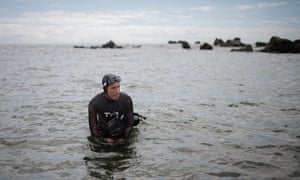My blog gives all data, facts and statistics about global real politic economic system, factors of production, poverty and inequality. Also I give information about popular hedonic life of human-beings. I believe that economy science must become a holistic social science that includes all multi dimensions of human (body, mind, soul) and to give inspiration (motivation) to become perfect "homo-economicus" generations for the 21th century.
3/07/2020
2/02/2019
2/01/2019
1/31/2019
1/30/2019
1/28/2019
1/27/2019
1/26/2019
1/19/2019
Why the Brain Is So Noisy
Matthias Kaschube studies that wiring by building models that describe experimentally observed brain activity. Kaschube and his colleagues at the Frankfurt Institute for Advanced Studies, the Max Planck Florida Institute for Neuroscience, the University of Minnesota, and elsewhere have found a host of features that stand in stark contrast to the circuits that engineers build: spontaneous activity and correlation, dynamic context generation, unreliable transmission, and straight-up noise. These seem to be fundamental features of what some call the universe’s most complex object—the brain.
BY MICHAEL SEGAL
JANUARY 17, 2019
http://nautil.us/issue/68/context/why-the-brain-is-so-noisy
BY MICHAEL SEGAL
JANUARY 17, 2019
http://nautil.us/issue/68/context/why-the-brain-is-so-noisy
9/13/2018
Bernanke on the causes of the financial crisis
former Federal Reserve Chair Ben Bernanke examines why many forecasters failed to anticipate the severity of the Great Recession and what really drove the economy into such a tailspin.
Bernanke’s research, which is rooted in quantitative analysis of how the 2007-2009 financial crisis affected the economy, argues that the housing bust, while significantly damaging, can’t on its own explain why the Great Recession was so bad. To understand fully the depth and timing of the economic downturn, we should look instead to the subsequent financial panic—including the run on short-term wholesale funding for financial institutions and the subsequent fire sales of credit-related assets—that sharply constrained the supply of credit.
If Bernanke’s findings are correct, then policymakers were right to implement some of the most controversial policies of the financial crisis, including efforts to rescue the big banks and re-start credit markets. By bringing the panic under control relatively quickly, those policies prevented a still deeper and more protracted recession.
9/08/2018
Man begins six-month swim through 'Great Pacific garbage patch'
Ben Lecomte plans to swim from Japan to US to raise awareness of plastic pollution. A French anti-plastic campaigner has begun a six-month journey to swim through the giant floating rubbish mass known as the Great Pacific garbage patch.

Ben Lecomte, who has previously swum across the Atlantic Ocean in 1998, left the shores of Choshi in Japan on Tuesday morning, heading east.
The 50-year-old plans to swim from Japan to San Francisco in 180 days, covering 8,000km. His journey will take him through 1,600km of the garbage patch, in an attempt to raise awareness about plastic pollution. The Great Pacific garbage patch, according to the latest March estimate, is twice the size of France and contains nearly 80,000 tonnes of plastic.
Also known as the Pacific trash vortex, the patch is caused by the North Pacific gyre – a circle of currents that keep plastic, waste and other pollution trapped.
According to scientists, the patch has been growing “exponentially” in recent years. The March estimate found it was 16 times larger than previously expected.
Lecomte and his support team intend to sample the water they swim through every day of the journey, and gauge the level of plastic and microplastic pollution.
The expedition’s first mate, Tyral Dalitz, told the ABC the team wanted to dispel a myth about the garbage patch.
Rather than being made up of large pieces of plastic, most of the pollution is made up of invisible pieces of microplastic that sit in the water like a “plastic smog”, he said.
“In reality the truth is much worse – the ocean is now filled with microplastics ... Rather than calling it an island of trash, it is more like plastic smog throughout the ocean.”

Scientists get ready to begin Great Pacific Garbage Patch cleanup
A team of scientists and engineers will on Saturday begin an ambitious cleanup of plastics in the Pacific Ocean targeting a stretch of water three times the size of France known as the Great Pacific Garbage Patch.
A 600m-long floating barrier will be launched off the coast of San Francisco and, powered by currents, waves and wind, will aim to collect five tonnes of plastic debris each month.
The marine apparatus known as System 001 is the brainchild of the Dutch inventor Boyan Slat who founded The Ocean Cleanup at the age of 18 in 2013.
Along with 70 staff he has spent the last five years testing 273 models and six different prototypes as part of the $20m (£15.5m) Netherlands-based project before arriving at the current design – nicknamed “Wilson” in reference to the famous volleyball from the film Castaway.
Kaydol:
Yorumlar (Atom)
Why the heck is there still an automotive chip shortage?
A side from the raw, human toll, COVID-19 has dramatically changed how we live, from travel and education to the way people work. This ...
-
The beauty of science may be pure and eternal, but the practice of science costs money. And scientists, being human, respond to incentives ...
-
Roubini is one of few economists who predicted the housing bubble crash of 2007-2008. He warned about the crisis in an IMF position paper in...
-
Blockchain technology has the potential to reduce costs, improve product offerings and increase speed for banks, according to the most rec...